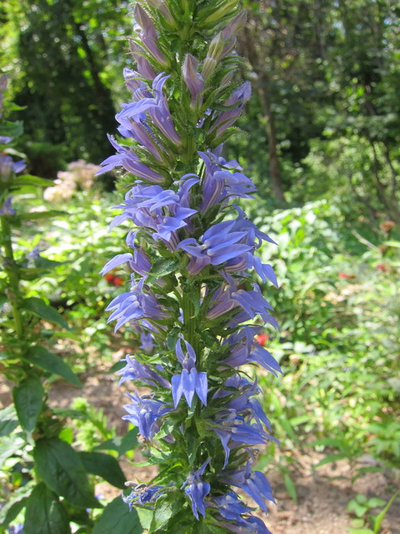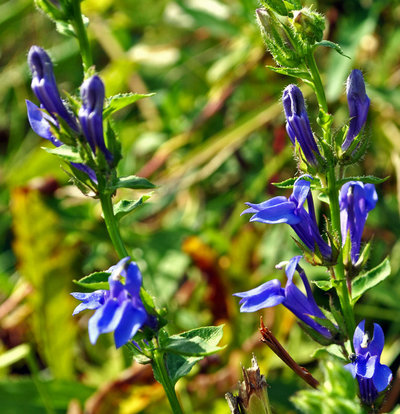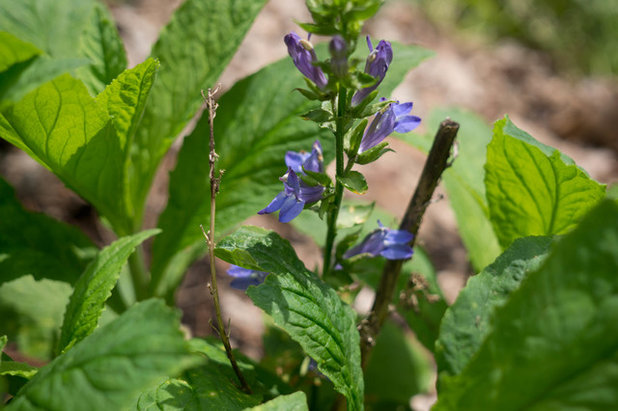You’re probably quite familiar with red cardinal flower (
Lobelia cardinalis), but there’s another version you might not know that’s easier to care for and tends to have a longer perennial lifespan. Great blue lobelia (
Lobelia siphilitica), or blue cardinal flower, flowers from late summer to early fall — providing calming violets and blues when summer is at its hottest. You’ll see diverse native bees stopping by, even the occasional moth or butterfly. Planted in drifts and masses, it is a real stunner for the front or middle of the border. Seed in fall or winter for flowers the following year.
 Botanical name: Lobelia siphiliticaCommon names:
Botanical name: Lobelia siphiliticaCommon names: Great blue lobelia, blue cardinal flower
Origin: Native from Minnesota southwest into Wyoming and Colorado, south to Oklahoma and Louisiana, and all points east
Where it will grow: Hardy to -40 degrees Fahrenheit (USDA zones 3 to 9; find your zone)
Water requirement: Medium to wet soil
Light requirement: Full sun if wet soil; partial shade if medium soil
Mature size: 2 to 3 feet tall and up to 18 inches wide
Benefits and tolerances: Likes wet soil; tolerates some shade; unique color and form
Seasonal interest: Blooms in midsummer to early fall; some winter interest with mature plants that have multiple spires
When to plant: Potted or bare-root plants can be planted from spring to fall; seed in fall or winter.
Photo: rockerBOO
 Distinguishing traits.
Distinguishing traits. Great blue lobelia turns on when many gardens are in a late-summer transition phase. Sometimes the blooms appear purple, sometimes bluer. You’ll find a host of long-tongued pollinators, from bees to butterflies and moths, enjoying the nectar. Another benefit? Rabbits and deer tend to leave it alone.
Photo: Aaron Carlson
 How to use it.
How to use it. Preferring a slightly loamy and rich soil, great blue lobelia looks great when massed and paired with other late-summer bloomers. Perfect at the water’s edge but not in a mucky location, this midsize plant will provide some vertical interest.
Planting notes. In its southern range, great blue lobelia appreciates consistent moisture or partial shade. It will self-sow only in optimal conditions. The seeds are small and need light to germinate, so a thickly planted garden will keep any unwanted seedlings at bay.
Photo: rockerBOOMore:See more Houzz guides to beautiful blue flowers
Browse plants native to other regions of the U.S.





